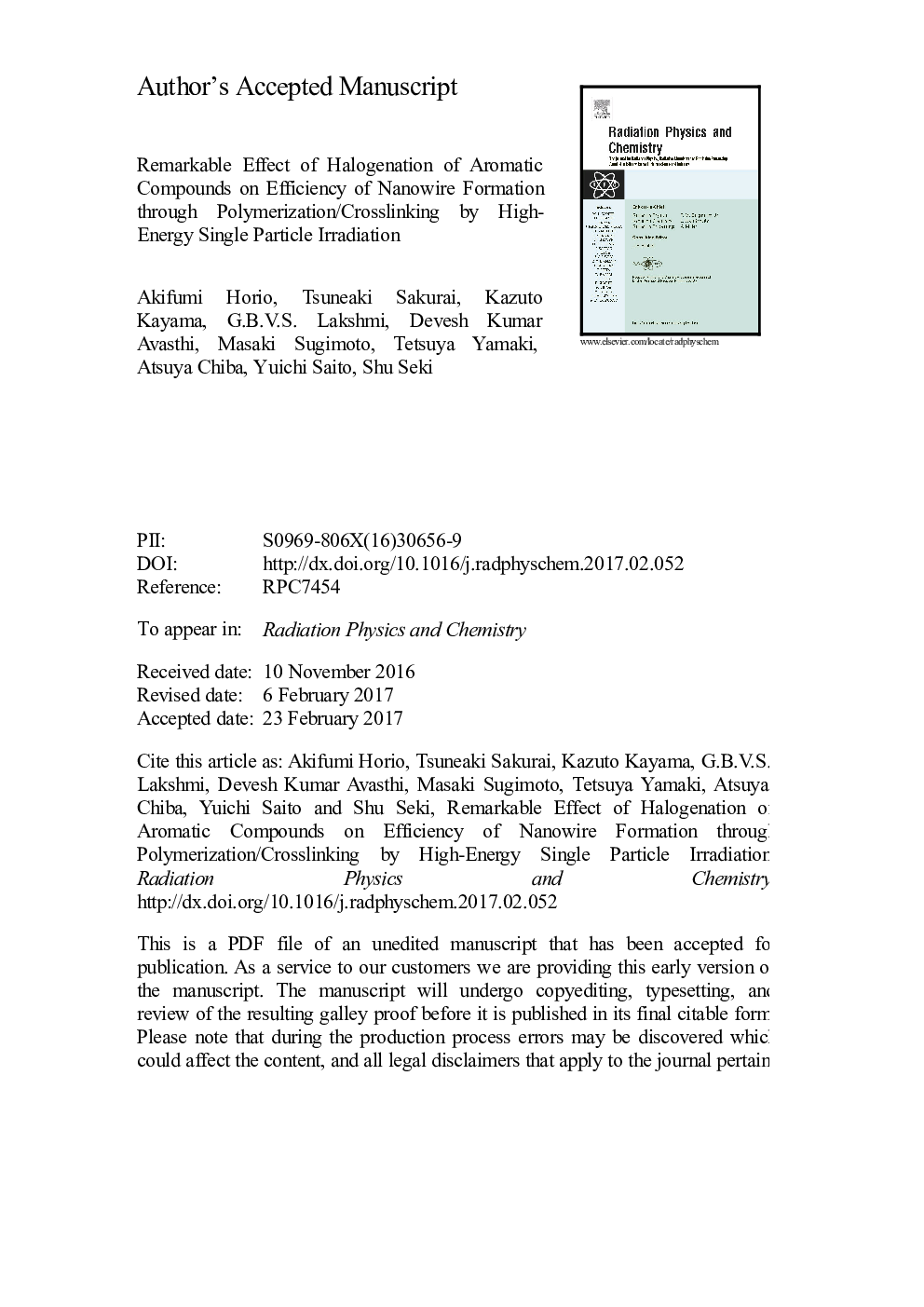| Article ID | Journal | Published Year | Pages | File Type |
|---|---|---|---|---|
| 8251838 | Radiation Physics and Chemistry | 2018 | 20 Pages |
Abstract
Irradiation of high-energy ion particles on organic films induced solid-state polymerization and crosslinking reactions of the materials along the ion trajectories, resulting in the formation of insoluble uniform nanowires with a precise diameter. The nanowires were isolated by the development process i.e. the irradiated film was immersed in organic solvents, and their morphology was visualized by atomic force microscopy. The target organic materials are 4-vinyltriphenylamine, poly(4-vinyltriphenylamine), and polystyrene derivatives with/without the partial substitutions by halogen atoms. It was found that 4-vinyltriphenylamines, in spite of their small molecular sizes, afforded nanowires more clearly than poly(4-vinyltriphenylamine)s. Moreover, the efficiency of demonstrated polymerization/crosslinking reactions obviously depends on the substituted halogen atom species. The averaged diameters of nanowires from bromo- or iodo- substituted 4-vinyltriphenylamine (9.3 and 9.4Â nm, respectively) were larger than that obtained from simple 4-vinyltriphenylamine (6.8Â nm). The remarkable effect of halogenation of aromatic compounds on the efficiency of the radiation-induced reactions was also observed for polystyrene derivatives. This contrast was considered to originate from the sum of the efficiency of elementary reactions including dissociative electron attachment.
Keywords
Related Topics
Physical Sciences and Engineering
Physics and Astronomy
Radiation
Authors
Akifumi Horio, Tsuneaki Sakurai, Kazuto Kayama, G.B.V.S. Lakshmi, Devesh Kumar Avasthi, Masaki Sugimoto, Tetsuya Yamaki, Atsuya Chiba, Yuichi Saito, Shu Seki,
